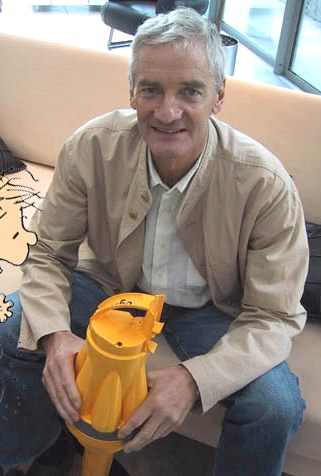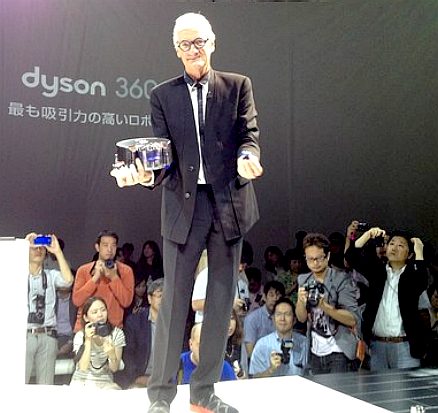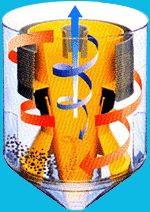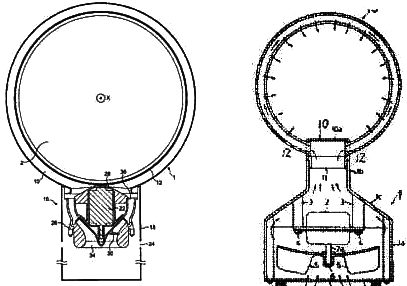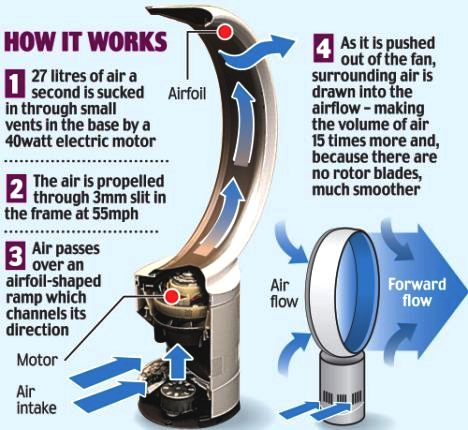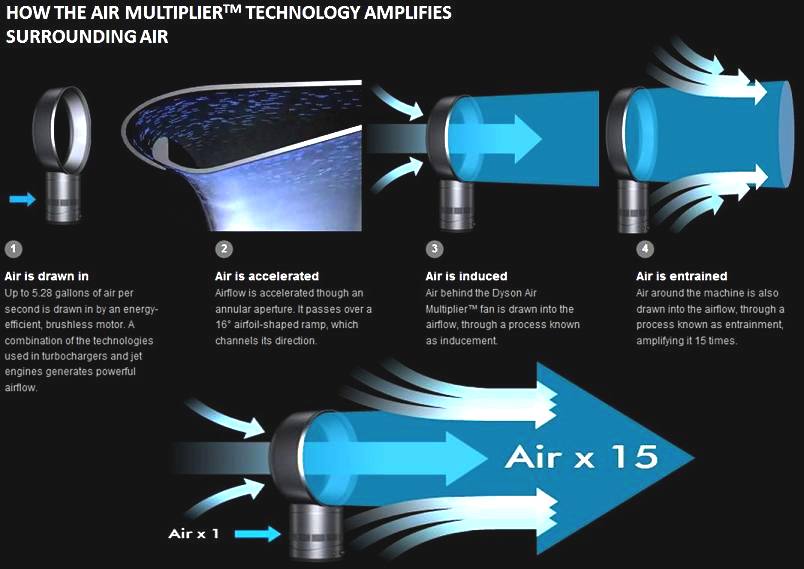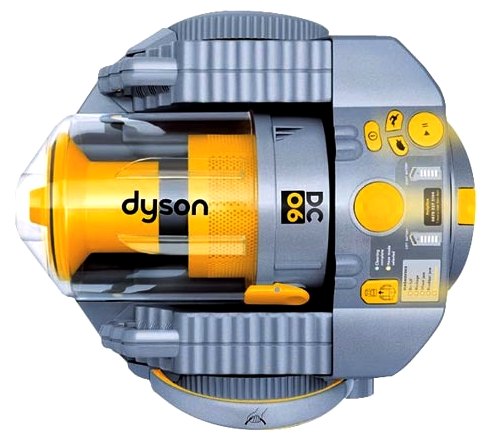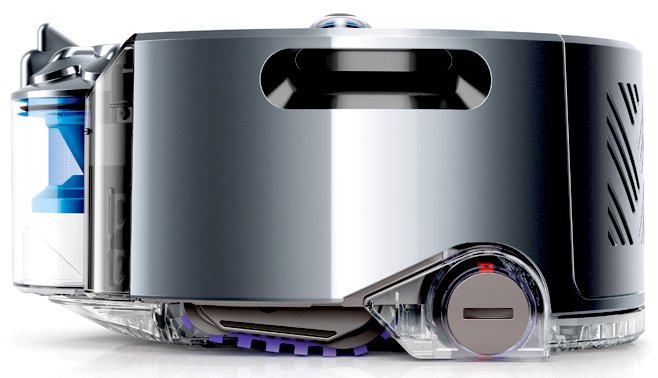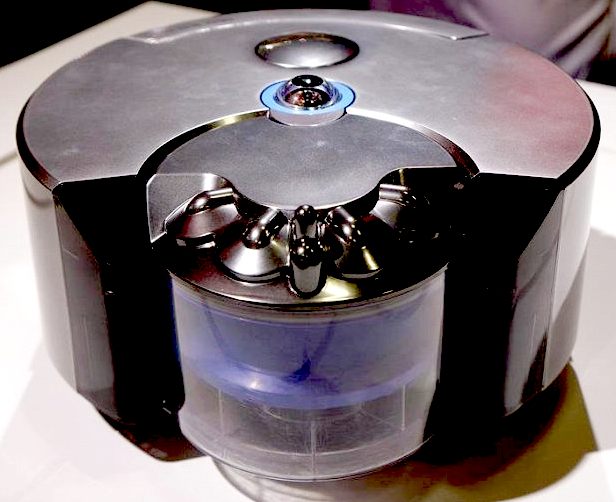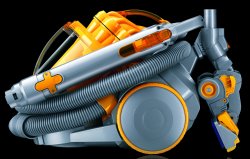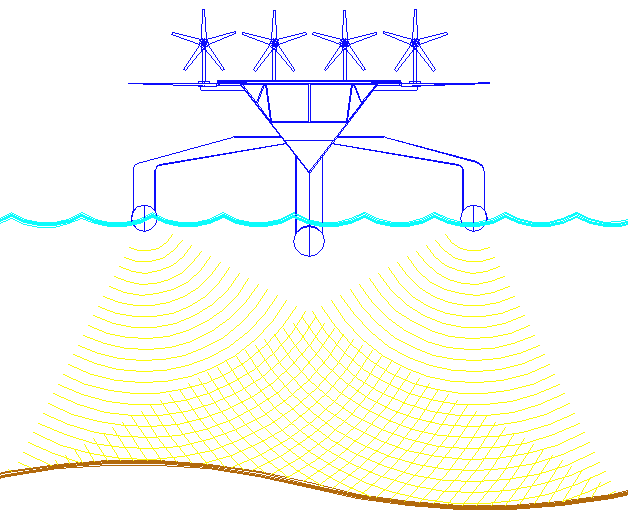|
SIR JAMES DYSON
|
||||
|
Sir James Dyson, CBE is a British industrial designer. He is best known as the inventor of the Dual Cyclone bagless vacuum cleaner, which works on the principle of cyclonic separation. His other inventions include the Ballbarrow.
Dyson studied furniture design and interior design at the Royal College of Art (1966-1970) before moving into engineering. His net worth is said to be just over a £1 billion [1]. In 1997 he wrote Against The Odds: An Autobiography co-authored by Giles Coren. ISBN 0-75280-981-4
Sir James Dyson
EARLY BALL BASED INVENTIONS
The Sea Truck, Dyson's first product, was launched in 1970 whilst he was in the Royal College of Art. Sales of the Sea Truck amount to $500 million. The Ballbarrow, a modified version of a wheelbarrow however using a ball to replace the wheel, was launched. Dyson remained with the idea of a ball and also invented the Trolleyball which was a trolley that launched boats. He then designed the Wheelboat which could travel at speeds of 64km/h on both land and water.
VACUUM CLEANERS
Dyson originally had the idea of using cyclonic separation to create a vacuum cleaner that wouldn't lose suction as it picked up dirt in the late 1970s. He also thought of a vacuum cleaner that could do this after he found the spray-finishing room's air filter for the Ballbarrow was regularly becoming clogged with particles. He made 5172 prototypes before launching the 'G-Force' cleaner in 1983, launching it through catalogue sales in Japan, in bright pink, with a selling price of £2000 (British Equivalent). He finally obtained his first U.S. patent on the idea in 1986 (U.S. Patent 4,593,429). Let's face it, James has a thing for canny airflow devices.
After failing to sell his invention to the major manufacturers, Dyson set up his own manufacturing company, which now outsells many of the companies that rejected his idea, becoming one of the most popular brands in the United Kingdom. In early 2005 it was reported that Dyson cleaners had become the market leaders in the United States by value (though not by number of units sold).
Cyclonic separation
Dyson's breakthrough in the UK market, more than 10 years after the initial idea, was through a TV advertising campaign that emphasized that, unlike its rivals, it did not require the continuing purchase of replacement bags. At that time, the UK market for disposable cleaner bags was £100m. The slogan of 'say goodbye to the bag' proved more attractive to the buying public than a previous emphasis on the suction efficiency that its technology delivers. Ironically, the previous step change in domestic vacuum cleaner design had been the introduction of the disposable bag - users being prepared to pay extra for the convenience of dustless emptying.
Following his success the other major manufacturers began to market their own bagless vacuum cleaners. Dyson sued Hoover UK for patent infringement and won (around $5 million in damages). Dyson dedicated two decades of his life to improving and marketing vacuum cleaners. Recently, his manufacturing plant moved from Malmesbury in the UK to Malaysia, partly for economic reasons and partly because of difficulty acquiring land for expansion. Eight hundred people lost their jobs. The company's headquarters and research facilities remain in Malmesbury.
Dyson later stated that due to the cost savings from transferring production to Malaysia he was able to invest in R&D at Malmesbury. Dyson currently employs more people in the UK than he did before the transfer of manufacturing to Malaysia.
In 2005 Dyson added the wheel ball from his Ballbarrow into a vacuum cleaner.
Dyson is outspoken on the subjects of design, engineering and innovation, although his success is arguably due equally to astute marketing and manufacturing than to any of those.
a) Dyson patent filing, b) Tokyo Shibauru patent filing 1981
BLADELESS FAN
Tokyo Shibaura Electric,
Japan, developed a nearly identical idea of a bladeless desktop fan in
1981, though it is was never manufactured.
The lack of blades also means the Air Multiplier doesn't need to be cleaned or dusted externally, but may coke up internally. We also like that it has a 'dimmer' type switch instead of the usual slow, medium, and fast settings on conventional fans. This means you can set the intensity of the airflow to exactly what you need.
ARTWORK
In 2002 Dyson envisioned a realisation of the illusions depicted in the lithographs of Dutch artist M.C. Escher. Engineer Derek Phillips was able to accomplish the task after a year of work, creating a water sculpture in which the water appears to flow up to the tops of four ramps arranged in a square, before cascading to the bottom of the next ramp. The creation titled Wrong Garden, was displayed at the Chelsea Flower Show in the spring of 2003. The illusion is accomplished with water containing air bubbles pumped through a chamber underneath the transparent glass ramps to a slit at the top from which the bulk of the water cascades down. This makes it appear that the water is flowing up, when actually a small amount of water diverted from the slit at the top flows back down the ramps in a thin layer.
Quotes: "I just want things to work properly."
ROBOTIC VACUUM CLEANER
Dyson
could have launched the DC06 and heralded it as the first robotic vacuum cleaner. It has three onboard computers, 2,000 electronic components, 27 separate circuit boards and 70 sensory devices. As
robots go, it's highly advanced. But
James wanted one that cleans properly and guides itself more logically than a
human would. And
he was prepared to wait.
The technology used in the humble robot vacuum cleaner, is not that far removed from proposals to vacuum plastic from the 5 major ocean gyres. Sir James has proposed a river barge using hydrocyclonic separation, that does not need robotic navigation because it is virtually tethered to a river bank. A simpler version of such proposals is actually functioning in Baltimore Harbor, where a water wheel and solar powered river cleaner, called Mr Trash, sifts around 2.5 tons of waste a day, helping to keep the North Atlantic clean. A United Nations report from 2014 puts ocean plastic garbage at an astonishing 270,000 tons. This waste kills sea turtles and albatross by the thousands.
Sir James Dyson calls it "high performing robot vacuum - a genuine labor-saving
device." Prime Minister Shinzo Abe encourages more Japanese women to
enter the workplace, it seems more home-cleaning robots are entering homes to pick up the housework slack.
Bang on cue the 360 Eye goes on sale first in Japan in
the Spring of 2015, with Sir James launching the robot in the middle of Tokyo. The rest of the world can expect to see it later in
the year for about ¥100,000
($950).
Dyson's unique design vacuum cleaners
LINKS
BBC notice of Dyson's water sculpture Wrong Garden with photos and diagram. Engineering the Difference Dyson's Richard Dimbleby Lecture in 2004 Dyson company web site. Dyson(UK) official UK web site. Blogs Japan rea ltime 2014 robot-cleaners-enter-japanese-homes-as-women-enter-workplace http://blogs.wsj.com/japanrealtime/2014/09/05/robot-cleaners-enter-japanese-homes-as-women-enter-workplace/
INVENTORS A - Z
The ultimate Robot Boat. The Dragonfly mine hunting concept uses an advanced SWASH hull as the platform to reduce risk to humans as navies around the world clear WWII mines and help to keep important choke points around the world clear from obstruction. A successful expedition could pave the way for improved safety at sea.
|
||||
|
This website is copyright © 1991- 2015 Electrick Publications. All rights reserved. The bird logo and names Solar Navigator and Blueplanet Ecostar are trademarks ™. The Blueplanet vehicle configuration is registered ®. All other trademarks hereby acknowledged and please note that this project should not be confused with the Australian: 'World Solar Challenge'™which is a superb road vehicle endurance race from Darwin to Adelaide. Max Energy Limited is an educational charity working hard to promote world peace.
|
||||
|
AUTOMOTIVE | BLUEPLANET BE3 | ELECTRIC CARS | ELECTRIC CYCLES | SOLAR CARS | SOLARNAVIGATOR |
